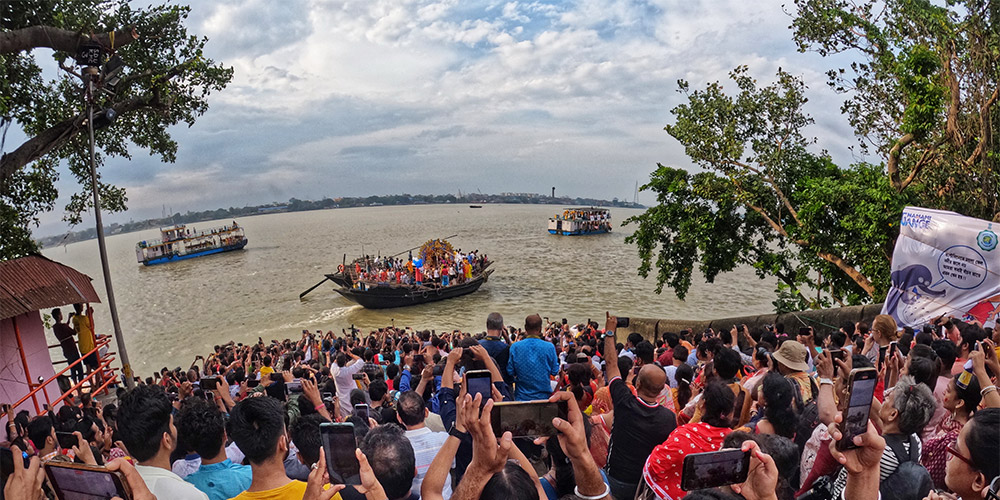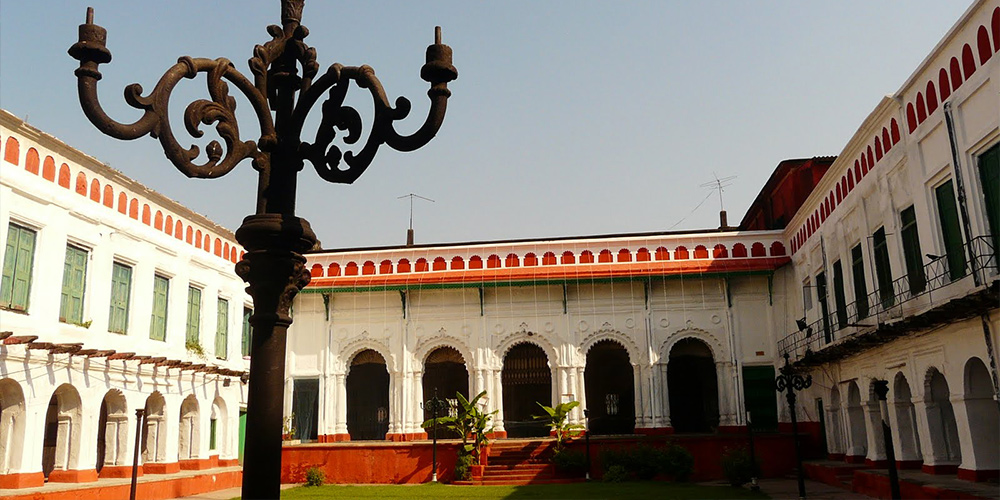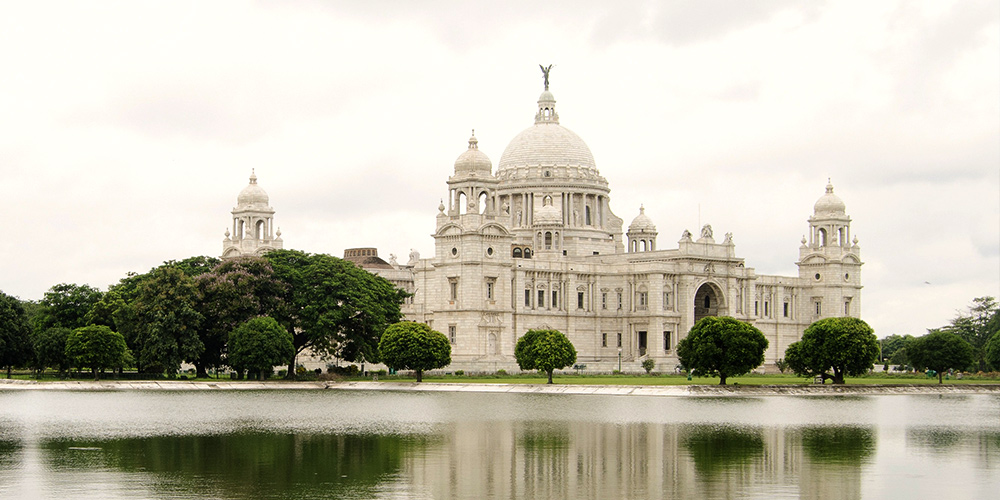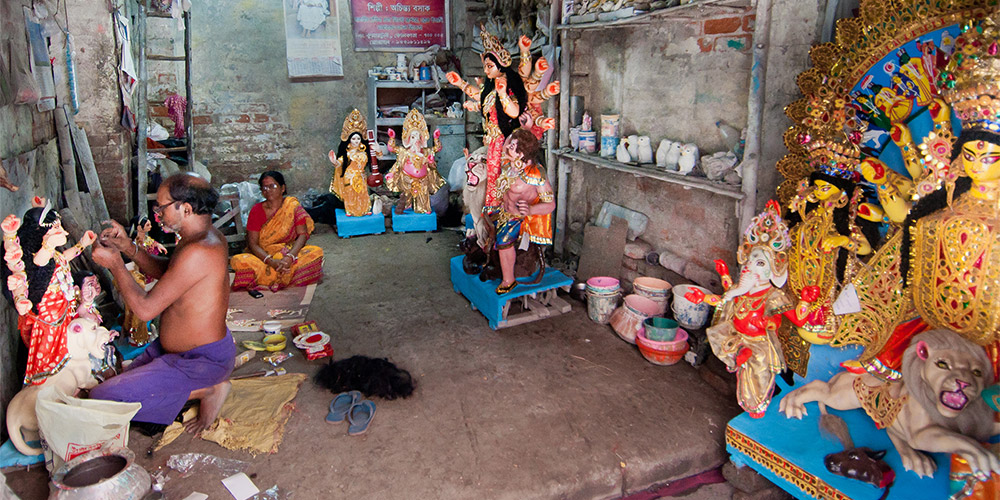Megacity Kolkata’s iconic Hooghly riverfront hit the spotlight again during the annual Durga Puja festivities. But this pulsating lifeblood of the waterfront communities is an all-year-round cultural hotspot in the city.
The tributary of the Ganga, Kolkata’s celebrated Hooghly River continues to inspire poets and filmmakers, lyricists, and artists. It’s a wondrous place where the sacred and material collide and join as one seamless entity which is intrinsic to everyday life in this great city.

From as far back as the 11th century the Hooghly, an important navigable waterway linked to the Bay of Bengal, has played a pivotal role in trade and commerce and the growth of the townships nestling on its banks. The fertile land, the abundance of natural assets, and the wealth of trading possibilities in Bengal were a magnet for the foreigners. From earliest times it has been a melting pot of cultures with its ancient linkages to China, Southeast Asia, Ceylon, western India, and the Near East, even Alexandria, through the great trading ships that trawled the trade routes of the Bay of Bengal. By the time the Portuguese, Danish, Dutch, French, and British arrived the Hooghly was awash with the thriving settlements of a multitude of ethnicities.

Today interest is quickening amongst travelers in the colonial heritage of the Hooghly in terms of Indian-European hybrid domestic architecture, and cultural practices of easily accessible towns such as Bandel (Portuguese-1660s), Chinsurah (Dutch-1650s), Chandannagar (French-1670s), Serampore (Danes-1750s), and Barrackpore (British-1770s) strung along downstream towards Kolkata.
Between the 17th and 18th centuries, intent on fortifying its hold on the maritime business activity on the Hooghly the English East India Company firmed up its roots by creating a settlement with a factory, a fortress, and a church.

Located on its eastern bank, the octagonal-shaped Fort William faces the river on three sides. The other five have prospects of lush verdure. The original fort was founded by the East India Company in 1696 and gained notoriety as the ‘Black Hole of Calcutta. Robert Clive laid the foundation stone of the second Fort William which was built in 1757. It’s interesting to note that Fort William is the only fort in the world from which not a single shot was ever fired! The old Fort William was repaired and reopened in 1766 as a customs house.

Today visitors can register for the heritage walk which covers many of the heritage structures and reveals a lot of war history, about life in Fort William. Points of interest on the walk are the Dalhousie Barracks; Command Museum; St Peter’s Church which is a replica of the Chapel of the Trinity Hall of Cambridge University; the Gothic-style edifice, Kitchner’s House, which now serves as the officer’s mess. It’s named after H.H. Kitchener, the commander-in-chief of Fort William between 1902 and 1909. Fort William now serves as the military headquarters of Eastern Command.
Colonial linkages notwithstanding, the force of the Hooghly’s hold on the natives has been there for millennia. Worshipped as the Ganga or the Bhagirathi, the Hooghly was an intrinsic part of everyday local life, especially for the Hindus, for whom it had enormous significance in terms of their faith and sacred rituals.

A visit to the Dakshineswar Kali Temple on the eastern banks of the Hooghly River opens up a whole new world for the tourist. Also known as Dakshineswar Kali Bari, its presiding deity, is Bhavatarani, the reincarnation of Goddess Kali. It was founded by the wealthy widow Rani Rashmoni, who was a deep devotee of the goddess in 1847. She was a prominent Bengali reformer and freedom fighter. The story is that as she was setting off to go to Varanasi on pilgrimage, the Goddess Kali appeared in a dream and said she did not need to travel all the way to that holy city. Instead, the goddess said she should raise a temple to her by the river and arrange for her worship in it. Propelled by this divine inspiration, she set about building this 9-spired or Navratna style, over 100ft tall temple, by the Hooghly, which today offers a fantastic window to Kolkata’s spiritual landscape.
The son of the head priest Ramkumar took over the reins of the shrine. He was none other than Sri Ramakrishna the famous Bengali Mystic and Kali devotee, who gained fame also as an influential figure in the 19th-century Bengal Renaissance. If you walk deeper inside the temple complex towards the northwestern corner of the courtyard, beyond the last of the Shiva temples, you will discover his room which is one of the most visited places at the temple site.

The flower sellers and clay image makers of kumartoli, two important riverside communities, play an important role in life around the shrine with its endless stream of devotees.
There are many spots of cultural value nestling by the Hooghly, or which are deeply interlinked with Kolkata’s sacred waterway. Plan on exploring more of these whenever you come to visit next. You are bound to discover new gems that will shed fresh light on the multi-layered narratives of this riverside megacity.


